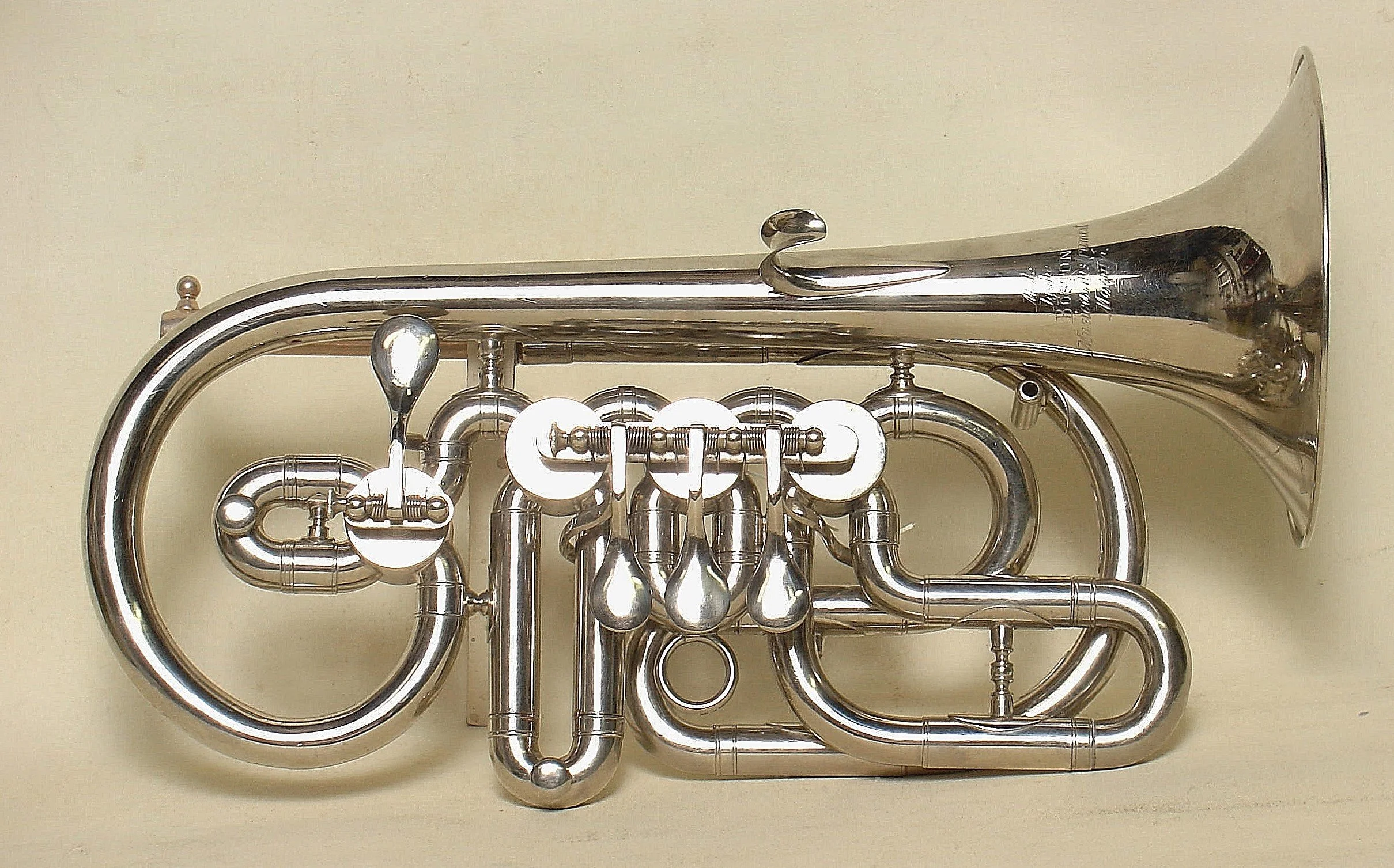Boston Orchestra Model Cornet
This Boston Bb rotary valve cornet was made in the early 1870s and was the same model that had been built by E.G. Wright starting in about 1865 and earlier versions before that. By the time that this example was built, the popularity of rotary valve instruments in the US was being overtaken by French and English style instruments with piston valves. As far back as the mid-1850s, the makers in Boston took note of how popular the Courtois Bb cornets were among soloists which influenced them in designing this and similar cornets. When the bore profile is compared to Courtois Arban and Koenig's models, it is obvious that this is a direct copy of those but with rotary valves. Boston instruments are among my favorites and I've worked many dozens of them. Every Boston instrument is a good playing instrument unless it has been abused or modified badly enough to ruin it.
The third photo in the gallery below shows the same model in all nickel silver and with a fourth valve from Tom Meacham’s collection.
Boston's catalogues listed brass and German silver versions of every instrument and in the early years they also offered the option of a German silver instrument with brass (as seen here) or copper bell. Some players thought that the different bell materials offered different acoustics and certainly the copper bell cornets are among the most visually appealing instruments ever made. The last photo below shows the orchestra cornet with an all brass Boston Band Model cornet. The Band Model is E.G. Wright’s earlier version of this design and has the same bore measurements but with tighter curves through the valve section and a slightly smaller bell. This basic layout continued to be available in these two models as well as with the One Star, Two Star and Three Star cornets.
This Orchestra Model retains it's original mouthpiece, Bb mouthpipe shank, bit and low pitch/A tuning slide. Virtually all US bands played in high pitch at the time indicating that this cornet must have been used for orchestra or church work, tuned to A=435Hz). It is 12 3/8" long with bell rim diameter of 5" and bore measuring .462".
Boston Band and Orchestra Model Cornets.





